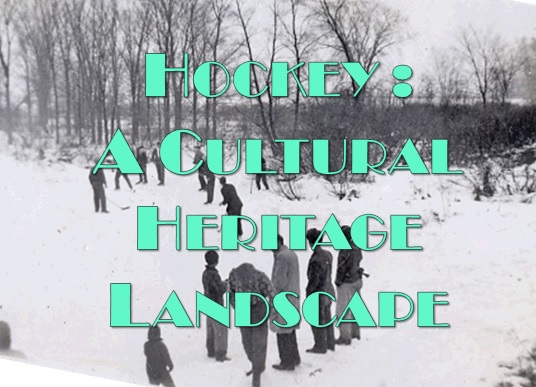Hockey fu
The origins of hockey are very closely tied to the natural heritage resources of Canada. Born of winter, early forms of hockey were first played on our many lakes and rivers. European settlers began to alter this natural landscape almost immediately, building dams, locks and mill ponds. Hockey quickly found a home on these more reliable and controlled water sources.
As the sport spread, communities began to build special purpose outdoor rinks, a tradition that is still practiced today as a ritual taught and repeated every year. The emergence of the indoor rink introduced built heritage resources to our landscape. Arenas were safer, warmer, protected, and offered a place for spectators to sit, changing the game from a participatory activity to a form of entertainment.
All of these resources form a network of cultural landscape features that are embedded in the fabric of Canada. The result is a massive cultural heritage landscape that has evolved over time, driven by social, economic, and cultural imperatives, in association with, and in response to the natural environment of Canada.
Yet there are threats to this cultural landscape: The cost of playing the sport, which limits participation of New Canadians and low-income families; Deterioration of arenas in communities that are suffering economically; A changing climate, the loss of the outdoor rink, and the unorganized open play that these spaces provide; and our increased understanding of the risks of contact sport.
The many and varied responses of Canadians to these threats provide alternative approaches to protecting and conserving cultural heritage landscapes.



